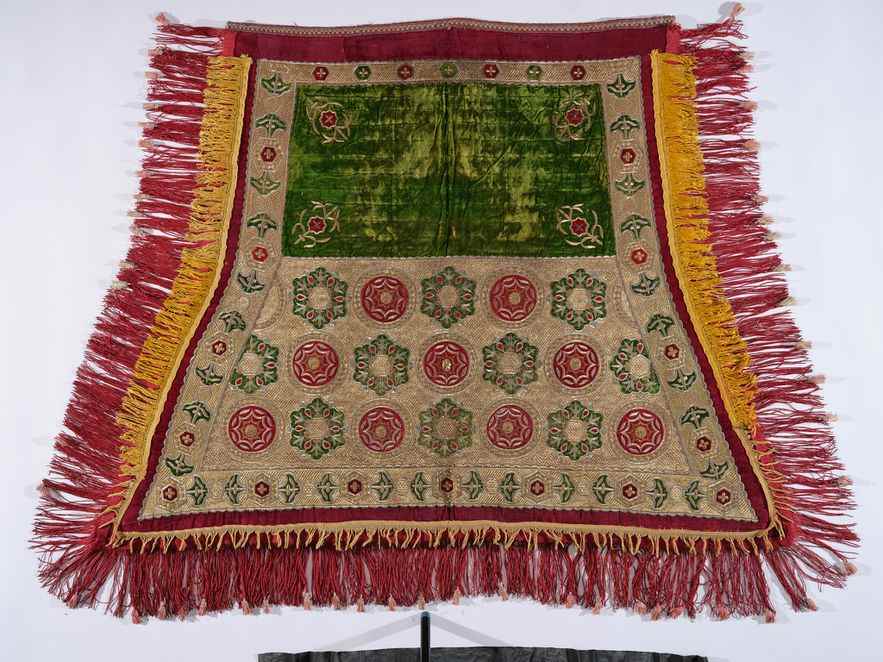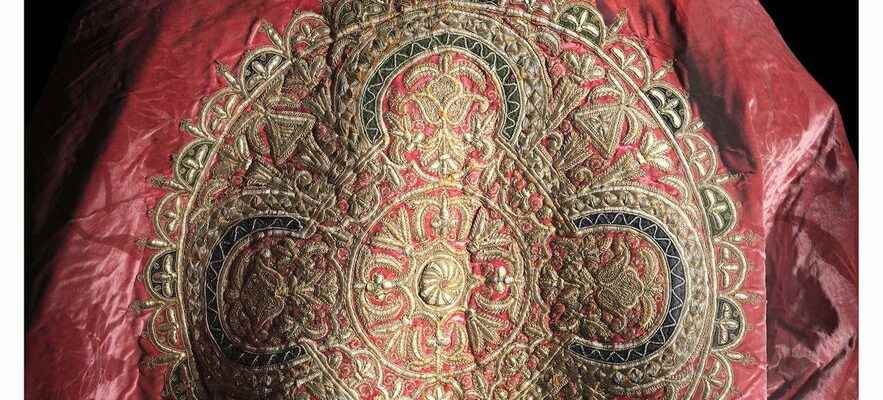There are small countries that hold the greatest treasures. At the crossroads of the Silk Roads, Uzbekistan is one of them. We discover all the wealth of craftsmanship at the Institute of the Arab World (IMA), in Paris, which, associated with the Uzbek Foundation for the Development of Art and Culture, exhibits 300 treasures presented for the first time outside the borders. of the discreet republic of Central Asia, which became independent in 1991 after the fall of the USSR. Under the general curatorship of the journalist and author Yaffa Assouline, luxuriously embroidered clothes, precious jewellery, carpets of paradise or equestrian accessories of great beauty illustrate here the incomparable know-how of local craftsmen from the end of the 19th to the beginning of the 20th century.
The last emirs then reigned over this territory of a thousand colors inherited from the Parthians, Arabs, Persians or Mongols who in turn forged the singular heritage identity of today’s Uzbekistan. Spectacular by their magnificence and their scenography, the rooms are revealed against a background of black picture rails, at the height of a man or suspended in the air, like the chapans, ample coats with complex weaving, or the tuybetey, these caps covering the inhabitants. except for older women. Visible until June 4, the IMA exhibition, On the roads of Samarkand. Wonders of silk and gold, is a rich prologue to the one deployed at the Louvre, Splendours of the oases of Uzbekistan (until March 6).
Of the chapans embroidered with gold
“Chapan”, 19th century, Bukhara. Velvet, gold embroidery.
/ © The Foundation for the Development of Art and Culture of the Republic of Uzbekistan © Laziz Hamani
An essential coat in the male wardrobe, the long caftan, called chapan or khalat, covers several layers of clothing. The most prestigious, exclusively intended for the emir and his relatives, are made on a silk velvet base, decorated with interwoven plant motifs in the darkham style and dotted with gold embroidery. This embroidered art, called zardosi – a word derived from Persian – flourished in Bukhara in the decades 1860-1885, under the reign of Muzaffar-ed-Din, who had a private workshop where embroiderers created , with mind-blowing skill, sumptuous pieces. “These unique pieces, sometimes entirely embroidered in gold, such as the coronation chapan of the last emir of the Manghit dynasty, Alim Khan, testify to the social and symbolic importance of the court pageantry”, underlines Yaffa Assouline. Illustration of the prestige conferred by the khalat, high dignitaries did not hesitate to wear up to seven superimposed on each other. Some could also weigh more than ten kilos!
The horses in majesty

Hip rug, Bukhara, 1905 (velvet, adras, gold embroidery).
/ © The Foundation for the Development of Art and Culture of the Republic of Uzbekistan © Audrey Arakelyan
The equine, always linked to the Uzbek way of life and identity since its domestication in the first millennium within an originally nomadic culture, was then the undisputed star of this court for which equestrian pageantry had no no price. Nothing is too good to adorn these horses, unwavering partners in territorial conquest and commercial expansion. During his reign (1911-1920), Mohammed Alim Khan made for his thoroughbreds – a race reserved for the emir and diplomatic gifts – croup carpets in gold-embroidered velvet, painted wooden saddles by hand, as well as silver jewelry set with turquoise, carnelian and enamel for harnessing. Corporations dedicated to the work of bronze, goldsmithery, carpentry, tannery or embroidery ensure, each in their field, the costly realization. These impressive adornments perfectly illustrate the luxury craftsmanship specific to Uzbekistan, whose strategic location at the crossroads of civilizations between the peoples of the steppes, India, Persia and China, has produced a unique heritage that we have not finished discovering.
